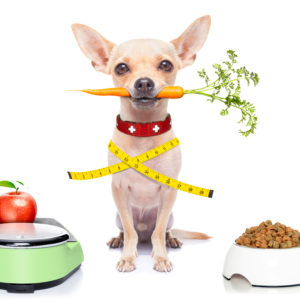
Nutrition-Part I ~ Series of IV
What’s a Chihuahua parent to do? There are so many foods to choose from and you want the very best you can afford for them, so how do you know?
This is the first in a series of posts, I’m going to share with you about how to make an informed choice for your dog’s health, energy, and overall well being.
Just walk down the pet isle of any major supermarket and what do you see? Food and treats of every kind imaginable stacked as high as they can get it. There’s dry, moist, semi-moist, canned, not to mention those for different stages of life. Are you confused? You don’t have to be. Making the right choice for your particular dog is easy if you know what to look for and why one is better, or not than another.
How Nutrients Work
No, don’t leave yet… I know nutrition, blah, blah, blah, sounds boring to me! I know, but I’ll try to make it short and sweet. You need to understand nutrition to a certain degree in order to know what it is you are looking for in a dog food. So, if you fell asleep in nutrition class like most of us did, read on. If you didn’t, you can skip this part.
How to Build a Healthy Chihuahua
All Dogs, including Chihuahuas, need a variety of nutrients to be and stay healthy (we’ll talk about some special Toy Breed things to consider later in this series). Just like us, they need a balance of:
- Carbohydrates
- Protein
- Fats
Fats also need to be balanced. Too much can cause obesity (Is it okay that my Chihuahua is chubby?) and too little won’t be enough protection from the changes in weather, as if they aren’t already sensitive enough too cold.
VITAMINS
Here are some that are essential and how they keep your dog healthy.
- Vitamin A – For fat absorption and a healthy, shiny coat. For normal growth and good eye sight and reproduction.
- Vitamin B – Necessary for the nervous system and for normal coat, skin, appetite, growth, and vision.
- Vitamin C – Really dogs produce this vitamin in the liver so it’s not mentioned often in the list of nutrients on the ingredient list on the bag. Some breeders, however, add it anyway.
- Vitamin D – Healthy bones and teeth, good muscle tone. But it must be ingested in the correct ratio with calcium and phosphorus.
- Vitamin E – For muscles and internal and reproductive organs.
- Vitamin K – Most dogs produce this vitamin in the digestive tract. They need this vitamin for normal blood clotting. If your dog seems to bleed too long from a minor cut, tell your vet. It could be a vitamin K deficiency.
MINERALS:
- Calcium and phosphorus must be in the correct ratio to protect puppies from rickets, bow legs, and other bone abnormalities. They aid in muscle development and maintenance also.
- Potassium – Normal growth and healthy nerves and muscles
- Sodium and chlorine help with the appetite so she∗ can enjoy normal energy levels.
- Magnesium is necessary to prevent convulsions and nervous system disorders.
- Iron – for healthy blood and to prevent fatigue from anemia
- Iodine – Just as in people, Iodine prevents goiter in dogs the same way
- Copper – Is for growing and maintaining strong bones as well as prevent anemia.
- Cobalt helps normal growth and keeps the reproductive tract healthy.
- Manganese – Aids in growth and healthy reproduction.
- Zink – Normal growth and healthy skin.
And there you have the basics of nutrients and why they are needed for optimum health. That wasn’t so bad, was it?
Bringing home, a new puppy
There is no guessing about what to feed your puppy, at least at first. The only food you should feed your new puppy is whatever she has been eating. Whatever the breeder or previous owner was feeding her, continue with that. If your new dog is an adult, make food changes very gradually. Going to a new home is stressful for them, abruptly changing their diet would be too much change all at once. Always ask the previous owner;
- What brand of food has she been eating?
- What has been her feeding schedule?
- How much does she eat at each feeding time?
Continue with this continually for up to a week. Then if you wish you can very gradually change their diet and or schedule to fit into your family’s routine.
Here’s a quick tip
If you feed your Chi in the kitchen or anywhere with a bare floor, you might want to get a rug to put under their bowl. They will put several morsels in their mouth at once and drop it and eat it from the floor or they will trot over to wherever you are and drop it there to eat.
How do you know when to change your Chihuahua’s diet?
Well, is she the right weight for her height? Does she seem to have enough energy? How about her coat? Does it feel soft and shiny and healthy? Are her eyes bright? Then, you know what they say…. If it ain’t broke, don’t fix it. Continue feeding what they have been eating, at least until another stage of life.

So, there’s the scoop on nutrition in a nut shell. I hope I didn’t bore you too much. In the next post in this series, we’ll learn more about commercial dog food. What are the choices and which is best for your Chihuahua?
∗In this article, I will refer to them as “she” or “her” for the sake of simplicity.







